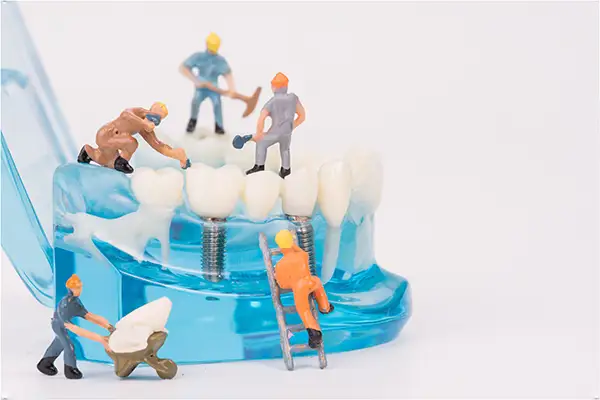Healing Timeline After Dental Implant Surgery Scarborough, ME Dental implants are a long-lasting and reliable solution for replacing missing teeth. Dental implants are a long-lasting and reliable solution for replacing missing teeth. It is important to be aware the journey to a fully restored smile involves a carefully paced recovery. Understanding the healing stages can help patients feel more prepared and confident throughout the process. Coastal Maine Oral and Maxillofacial Surgery offers expert guidance and care to support each step, from the day of surgery through complete integration of the implant. Dental Implant Healing Timeline: What to ExpectImmediate Post-Surgery Recovery (First 48 Hours)The first two days after surgery are focused on rest and protecting the surgical site. Patients may experience mild swelling, minor bleeding, and some discomfort, which can be managed with prescribed medications and cold compresses. It is important to avoid strenuous activity and keep the head slightly elevated while resting to minimize swelling. During this time, following all post-operative instructions closely will set the stage for a smooth recovery. Week 1-2: Initial Healing PhaseIn the first couple of weeks, the focus shifts to reducing inflammation and allowing the gums to begin sealing around the implant site. Most patients notice a significant decrease in swelling and discomfort after the first few days. Stitches, if present, may dissolve on their own or be removed at a follow-up appointment. Gentle oral hygiene around the surgical area is important, but brushing and flossing should be done carefully to avoid disturbing healing tissues. Weeks 3-8: Soft Tissue RecoveryOver the next month or two, the gums continue to strengthen and adapt around the implant. While discomfort is typically minimal at this stage, the implant is still in a delicate phase. Patients should maintain excellent oral hygiene and avoid chewing directly on the implant site. This period is essential for soft tissue maturation, which supports the long-term stability of the implant. Months 2-6: Osseointegration ProcessOsseointegration is the stage where the jawbone bonds with the implant post, creating a strong and stable foundation for the restoration. This process can take several months, depending on individual healing rates and bone health. Regular checkups allow the oral surgeon to monitor progress and ensure the implant is integrating as planned. Patience during this stage is vital, as rushing the restoration process can compromise long-term results. Foods to Eat and Avoid During RecoveryDiet plays an important role in supporting the dental implant healing process Scarborough patients experience. In the early days, soft foods such as yogurt, mashed potatoes, smoothies, scrambled eggs, and soups are recommended. These minimize chewing stress on the surgical area while providing necessary nutrients for healing. Hard, crunchy, sticky, or excessively hot foods should be avoided during the initial recovery phase. As healing progresses, patients can gradually return to a normal diet, but it's best to confirm with the oral surgeon before introducing more challenging foods. Follow-Up Appointments and MonitoringFollow-up visits are an essential part of the dental implant recovery Scarborough residents can expect. These appointments allow the surgeon to assess healing, make adjustments if needed, and ensure the implant is stable before the final restoration is placed. Skipping these visits can increase the risk of complications and delay the treatment timeline. From the first 48 hours to the final months of osseointegration, each stage of dental implant recovery plays a crucial role in the success of the treatment. With attentive care, a proper diet, and regular checkups, patients can enjoy the benefits of a restored smile that looks, feels, and functions like a natural tooth. If you have further questions or concerns in regard to the healing process after dental implant surgery, please call us at (207) 945-7840 for more information. |